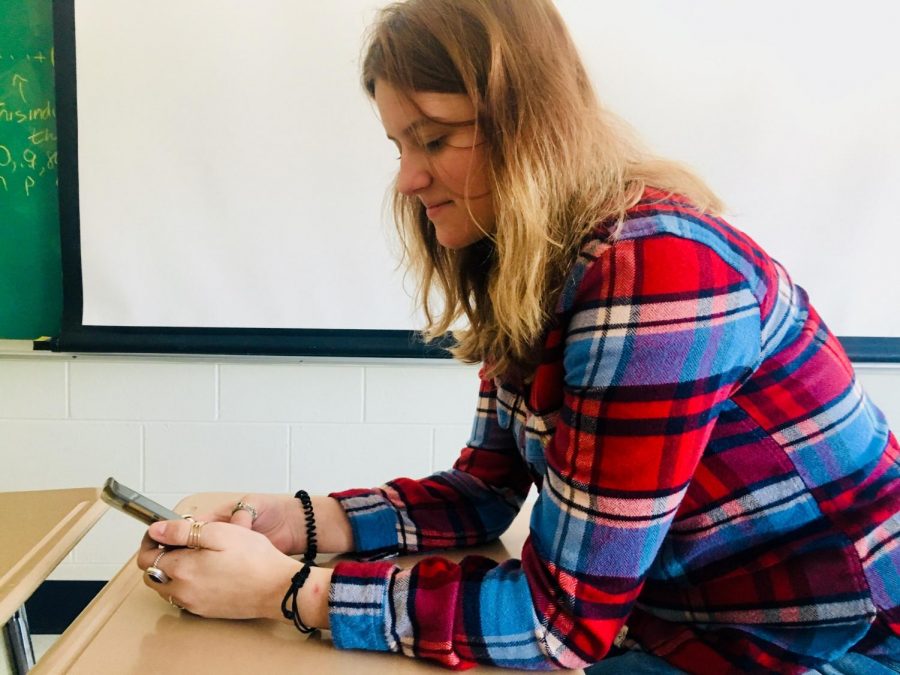The most addictive drug: Your phone
Senior, Lydia Schiedler, sits on her phone in class. Photo taken by Modear Bumrungkwaen.
November 14, 2019
Social media is one of the most dangerous addictions for teenagers. According to a non-profit technological organization, Common Sense Media, US teens spend nearly nine hours a day on social media. For children ages 8-12, the average usage time is about six hours per day.
On a daily average, I spend about an hour and 50 minutes on Instagram, 45 minutes on Facebook, and four hours on Snapchat. However, compared to my classmates, I don’t think I’m that addicted to social media as much as adults think I am.
Every time I’m in class, there is always that one person who hides their phone under the desk every single day. For the most part, it annoys me because the teacher always stops the class for a few seconds to yell at them to put their phone away.
Although I am somewhat focused in school, this is a situation I can relate to at home.
I spent over 10 hours a day on social media this summer and only 30 minutes a week studying for the ACT: something that will determine my future. When working, I would glance at my phone to see if I received a snap or a text. I question myself every day, If I worked harder and spent less time on social media, would my test score and GPA have been better?
Penn State University conducted a study by randomly choosing 500 college students and asked them their GPA and cell phone usage time. The result of the study according to Penn State is, “The students with low cell phone usage had a GPA of 3.2 and the high users had a GPA of 2.8. The data was collected over a six month period and over that time the study also showed that students who used their cell phone more had more anxiety.”
Moving on from the danger of phones and their effects on GPA, let’s discuss how anxiety is an outcome of too much phone time. Social media platforms such as Instagram can play a harsh role for teenagers especially. “Instagram models” are beautiful girls known for photoshopping and being famous, which can lead to body insecurity for young teens who idolize these users. The app promotes a false idea of what is “perfect” and what is desirable.
Using platforms such as these can also be dangerous. This summer, my Instagram account was hacked four times from an unknown location. This is where the scary part comes in. According to the University of Phoenix, nearly two-thirds of U.S. adults with social media experienced social media hacking at least once.
Most people put their personal information on social media thinking nothing of it, but as the statistics show, most people are susceptible to dangerous internet activity.
The internet is not a safe place, some people might argue, but it’s nearly impossible to get off of the internet. One of the most nonsense solutions I’ve ever heard is that going outside will distract you from your phone. I would have to disagree.
No matter where you go, your phone will always be with you. Even while indecisively shopping for an outfit, teenage girls will still snap chat their outfit to their friends asking whether or not they liked the dress when the honest truth is that your friends’ opinions don’t really matter. Also, while hiking, some people waste time posing for an Instagram picture; Or playing sports, but checking notifications in between games.
Will this technology-driven generation ever be able to get rid of this constant addiction?


